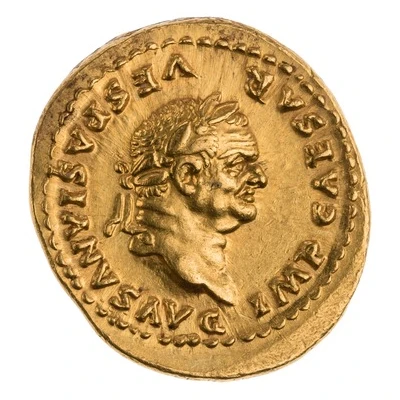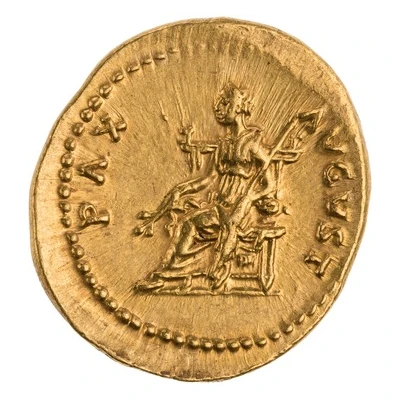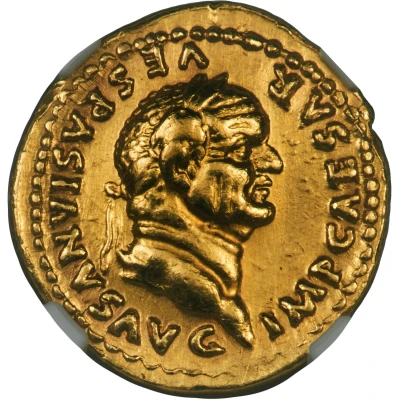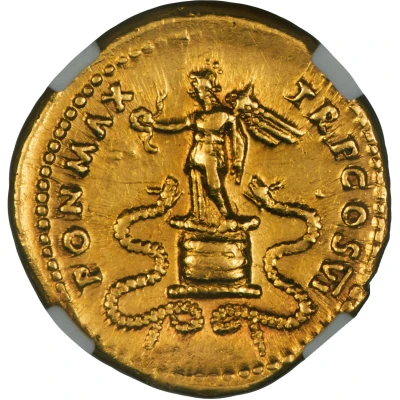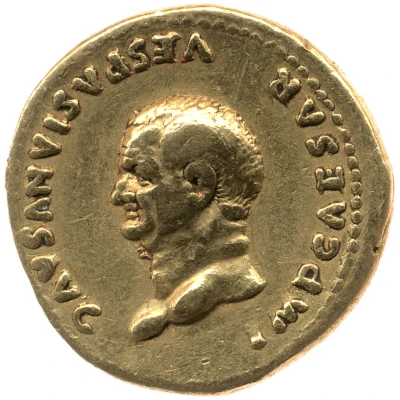
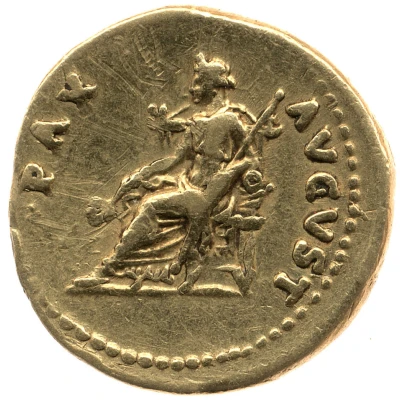

© Trustees of the British Museum
Aureus - Vespasian PAX AVGVST; Pax
75 year| Gold | 7.3 g | - |
| Issuer | Rome › Roman Empire (27 BC - 395 AD) |
|---|---|
| Emperor | Vespasian (Titus Flavius Vespasianus) (69-79) |
| Type | Standard circulation coin |
| Year | 75 |
| Value | 1 Aureus = 25 Denarii |
| Currency | Denarius, Reform of Augustus (27 BC – AD 215) |
| Composition | Gold |
| Weight | 7.3 g |
| Shape | Round (irregular) |
| Technique | Hammered |
| Demonetized | Yes |
| Updated | 2024-10-05 |
| Numista | N#249680 |
|---|---|
| Rarity index | 100% |
Reverse
Pax, draped, seated left on throne, holding branch in right hand which rests on right knee and transverse sceptre in left.
Script: Latin
Lettering: PAX AVGVST
Translation:
Pax Augusta.
Peace, the venerable.
Comment
Source: Online Coins of the Roman Empire (OCRE)Interesting fact
The Aureus was a gold coin used in ancient Rome, and the Vespasian coin was minted during the reign of Emperor Vespasian (69-79 AD). The coin's obverse side features the image of Vespasian, while the reverse side features the goddess Pax (Latin for "peace") holding an olive branch and a scepter. The coin's inscription, "PAX AVGVST," translates to "Peace of the Augustus," referring to the Roman Empire's claim to have brought peace and stability to the region. This coin is interesting because it highlights the importance of the Roman Empire's propaganda efforts. By featuring the image of Vespasian and the goddess Pax on the coin, the Roman Empire was able to promote its ideals of peace and stability, while also showcasing the power and wealth of the empire through the use of gold. Additionally, the coin's inscription emphasizes the connection between the Roman Empire and the earlier Roman Republic, which had used the same image of Pax on its coins. Overall, the Aureus - Vespasian (PAX AVGVST; Pax) (75) coin provides a fascinating glimpse into the propaganda and ideology of the Roman Empire during the reign of Vespasian.
